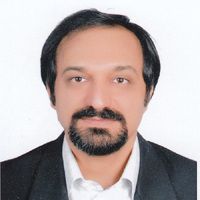Narrative Temporal Structure in the Dramatic Works of Bahram Beizai and Akbar Radi (Research Cases: the Plays Afra and Khanomche va Mahtabi)
Narratology is a field of study that focuses on the examination and analysis of the structure and components of narrative. Gérard Genette is widely recognized as one of the most influential theorists in this subject due to his structural investigation of the element of time. He assigns three levels to narrative discourse: voice, tense, and mode. Genette studied the differences between story time and narrative time. Hence, in order to gain an understanding of the structure of time in the narrative, Genette analyzes the three elements of order, duration, and frequency. This allows for the specification of different types of flashback and flashforward narratives, anachrony, and types of time accelerations that result in different rhythms in the dramatic narrative. Dramatists have been studying the narrative structure since Aristotle's Poetics, and they can use the examination of its elements as a practical benchmark. Theorists who specialize in narrative and dramatic works, like Fludernik, Rimmon-Kenan, and Chatman have developed Genette’s ideas on fictional and dramatic narration. The comparative of one of the narrative elements, such as time, in the texts of two Persian-language playwrights makes the classical pattern of drama and its use in Iranian plays, as well as its comparison with the traditional and narrating pattern of this play, to be researched. The present research uses analytical-descriptive method of written sources and books to compare the structure of time in the dramatic narratives of two prominent Iranian dramatists, Bahram Beizai and Akbar Radi, with a look at the plays Afra and Khanomche va Mahtabi. This research attempts to explain how, in contrast to one another, Beizai and Radi brought the temporal structure of the narrative into the field of writing, and how they used it dramatically. The purpose of this research is to study the narrative time in the dramatic texts of two Iranian dramatists from structural aspects, relying on Gérard Genette's opinions. The findings of this article emphasize how flashbacks and anachrony have had a substantial impact on the play’s narrative flow and temporal structure. Additionally, temporal duration and frequency have also been involved. This anachronism has caused both texts to find a format close to the Iranian dramatic tradition in terms of the connection between the events and other narrative elements such as characters, theme, plot, etc., which is more significant in Afra in terms of the narrative style. However, the dramatic and conversational elements of Khanomche va Mahtabi are more closely associated with the temporal fractures in the narrative structure. Through the use of dramatic devices like sound or the removal of dialogue, as well as story techniques like the use of a narrator and narrating the past story in the present tense, both authors have attempted to employ other modes of narrative time. The timeline diagram of events in both plays includes discrete forward lines with flashbacks occurring during time breaks, as well as the direct course of those dialogues that review the present time.
-
A Comparative Study of Box-Shaped Gravestones and Wooden Cenotaphs (Based on the Structure of Form and Content)
Soheila Ghanian, Javad Neystani*, Hamidreza Shairi, Issa Mottaghizadeh
The Journal of Research in Humanities, -
From Lutman's symbolic sphere to Grimas's narratology, study of Dostoyevsky's novel "Crime and Punishment"
Siavash Golshiri, *, Bahman Namvarmotlagh
Research in Contemporary World Literature,


